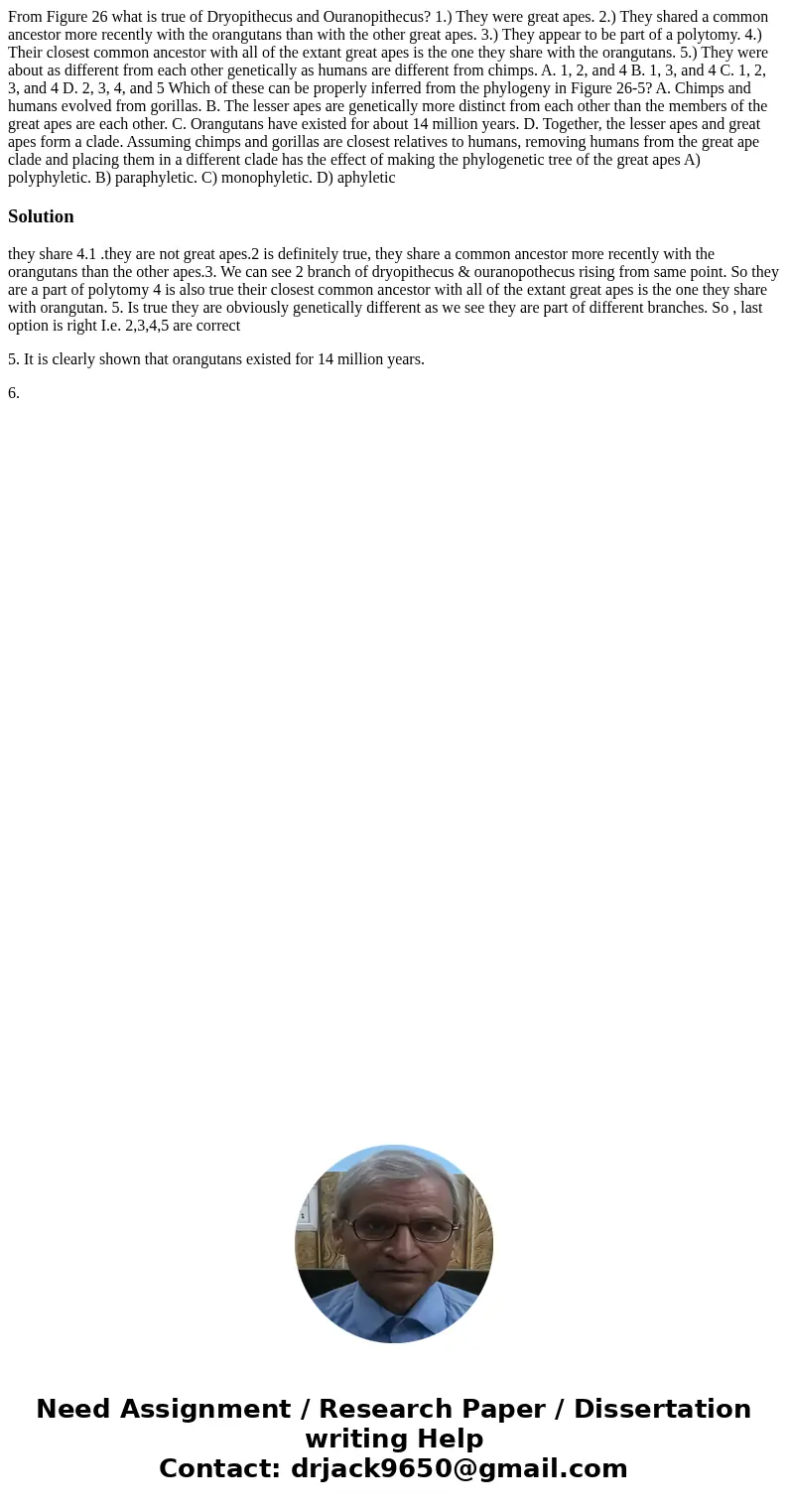From Figure 26 what is true of Dryopithecus and Ouranopithec
From Figure 26 what is true of Dryopithecus and Ouranopithecus? 1.) They were great apes. 2.) They shared a common ancestor more recently with the orangutans than with the other great apes. 3.) They appear to be part of a polytomy. 4.) Their closest common ancestor with all of the extant great apes is the one they share with the orangutans. 5.) They were about as different from each other genetically as humans are different from chimps. A. 1, 2, and 4 B. 1, 3, and 4 C. 1, 2, 3, and 4 D. 2, 3, 4, and 5 Which of these can be properly inferred from the phylogeny in Figure 26-5? A. Chimps and humans evolved from gorillas. B. The lesser apes are genetically more distinct from each other than the members of the great apes are each other. C. Orangutans have existed for about 14 million years. D. Together, the lesser apes and great apes form a clade. Assuming chimps and gorillas are closest relatives to humans, removing humans from the great ape clade and placing them in a different clade has the effect of making the phylogenetic tree of the great apes A) polyphyletic. B) paraphyletic. C) monophyletic. D) aphyletic
Solution
they share 4.1 .they are not great apes.2 is definitely true, they share a common ancestor more recently with the orangutans than the other apes.3. We can see 2 branch of dryopithecus & ouranopothecus rising from same point. So they are a part of polytomy 4 is also true their closest common ancestor with all of the extant great apes is the one they share with orangutan. 5. Is true they are obviously genetically different as we see they are part of different branches. So , last option is right I.e. 2,3,4,5 are correct
5. It is clearly shown that orangutans existed for 14 million years.
6.

 Homework Sourse
Homework Sourse